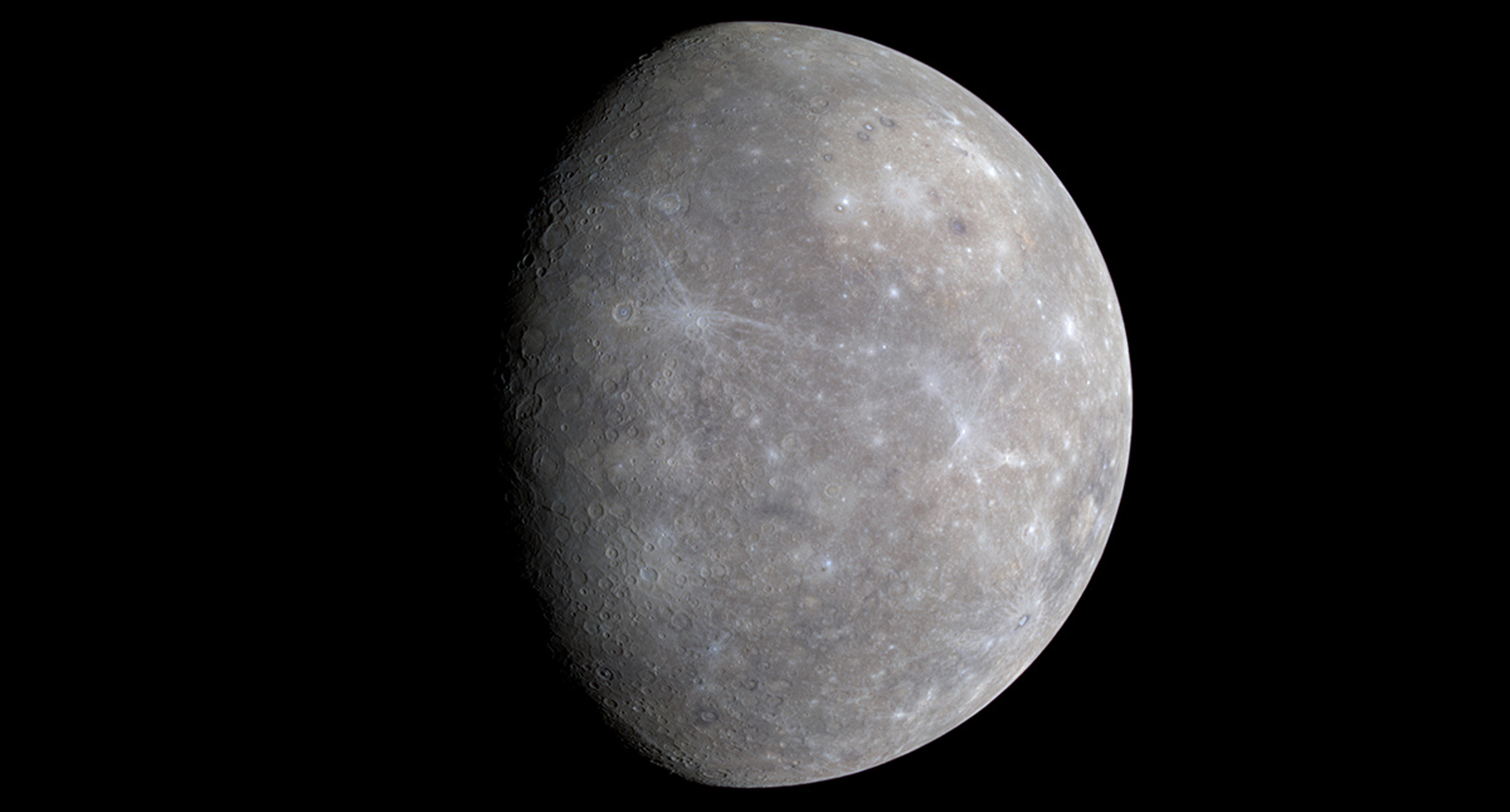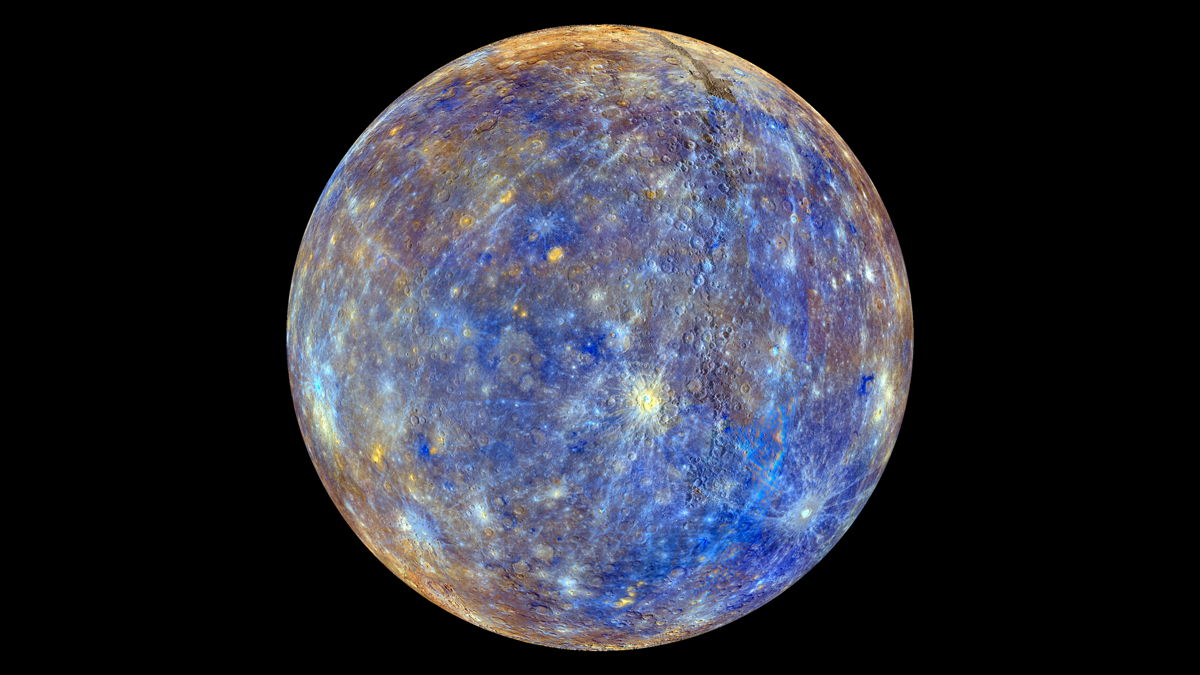
Mercury is a planet that just doesn't make sense. It's incredibly small yet hosts a relatively massive core. Mercury is so strange that astronomers have not been able to explain its properties with simulations of the solar system's formation. But now, researchers have found an important clue, and Mercury's weirdness appears to be the fault of the giant planets.
Mercury is by far the smallest planet in the solar system, with only around 5.5% of both the mass and volume of Earth. Despite that diminutiveness, Mercury manages to be the second-densest planet in the solar system, with a whopping 98% the density of Earth.
Mercury has that incredible density thanks to its large core, which stretches to roughly 85% of the entire planet's radius. For comparison, Earth's core reaches only about halfway.
Related: 10 strange Mercury facts
Ever since astronomers began developing simulations of the formation of the solar system, they've had difficulty explaining Mercury's strange combination of small size and huge core. Our best simulations so far capture only the general picture of the inner planets' formation, a roughly 100 million-year-long period in which small planetesimals collided to form the planets we have today. Those simulations can get the correct number of inner planets (four) and their general parameters, like the ellipticity of their orbits, and do it all in the correct amount of time.
But those simulations regularly fail to get the masses of the inner planets right, and they especially fail at explaining why Mercury has such a big core.
Messy Mercury

Astronomers dug into the mystery of Mercury in a new paper published in the journal Icarus. While they couldn't quite explain all of Mercury's properties, they did come much closer than previous groups have, and they argue that their results point in the right direction.
The first goal is to explain Mercury's small size. Part of that is certainly caused by the relative lack of construction material within the early protoplanetary disk that would eventually grow into planets around the young sun. Simulations of the development of protoplanetary disks suggest that they tend to be thinner toward their inner edges as a result of the centrifugal force and radiation pressure from the growing star at the center. So, right off the bat, Mercury wasn't given a lot to work with.
Second, the outer planets did not form in their present locations. There simply wasn't enough material at their different orbital radii for them to be constructed there. So they had to form closer together and closer to the sun, where the density of gas was the highest. Once they formed, they began gravitationally interacting with each other, tugging on their neighboring planets over millions of years until they reached their present orbits.
In their simulations, the researchers found that this dance among the outer planets severely depleted the innermost regions of the protoplanetary disk, removing even the small amount of material that was already there. Even though the giant planets are extremely far from Mercury's orbit, their massive size more than makes up for their distance, and their motions trigger instabilities in the inner disk. Those tiny gravitational tugs are capable of sending material right into the sun or even ejecting them from the solar system altogether.
Making Mercury
So Mercury wasn't starting with a full deck; it was doomed to be small. But what about its oddly large core? The researchers found that they could explain such an impressive core through the same scenario that depleted the proto-Mercury of raw material. When the planets first started forming, Mercury wasn't alone; it shared an orbit with dozens, if not hundreds, of other planetesimals and protoplanets. The gravitational games of the outer planets removed many of those protoplanets from the inner solar system, but plenty were left behind.
And then came the collisions. The researchers found that young Mercury suffered dozens (and potentially hundreds) of collisions with similarly sized objects. Each collision was especially violent, capable of ripping away and vaporizing any lighter rocks. All that was left behind were the heavier elements that form planetary cores. With each collision, Mercury gained core mass but not the lighter mantle and crust materials.
While plausible, the researchers' model doesn't quite capture the full picture. Although they can build a Mercury with the right core size in the right orbit, they still can't reproduce the overall size of the planet. Their simulated Mercurys always end up too big.
Nonetheless, the results still count as progress. It's now clear that the giant planets played a major role in shaping the inner solar system, and their ability to remove material from the inner protoplanetary disk sets the stage for Mercury to suffer the collisions necessary to build up its core. Hopefully, a more detailed simulation will capture all of the intricate dynamics of the young solar system and build a complete picture of the history of all the planets.
Follow us on Twitter @Spacedotcom and on Facebook.







